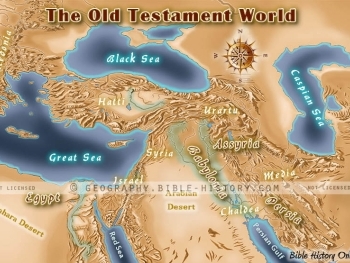Hadrian's Arch, also known as the Arch of Hadrian or the Triumphal Arch, is an ancient Roman monument located in Jerash, Jordan. It was erected during the reign of the Roman Emperor Hadrian in the 2nd century CE. While the Bible does not specifically mention Hadrian's Arch, its construction in Jordan is attributed to the influence and policies of the Roman Empire during that time.
Emperor Hadrian visited various regions of the Roman Empire, including the province of Judea and the surrounding territories, during his reign. He is known for his interest in architecture and urban planning, and he initiated several construction projects throughout the empire, leaving a significant architectural legacy.
The purpose of Hadrian's Arch in Jordan is believed to be multifaceted. It likely served as a triumphal arch to commemorate Hadrian's visit and showcase the might and grandeur of the Roman Empire. It may have also functioned as an entrance gate or part of a larger architectural complex, serving as a symbolic and monumental marker of the Roman presence in the region.
The construction of such arches was a common practice in ancient Rome to honor emperors, celebrate military victories, and reinforce Roman authority. While the specific reasons for Hadrian's Arch in Jordan may not be explicitly mentioned in the Bible, its presence reflects the broader historical and cultural context of the Roman Empire's influence and architectural endeavors during that period.
In summary, Hadrian's Arch in Jordan was erected during the reign of Emperor Hadrian as a testament to Roman power and influence. While the Bible does not directly address this specific monument, its construction aligns with the broader historical context of Roman presence and architectural projects in the region during the time of the New Testament.












